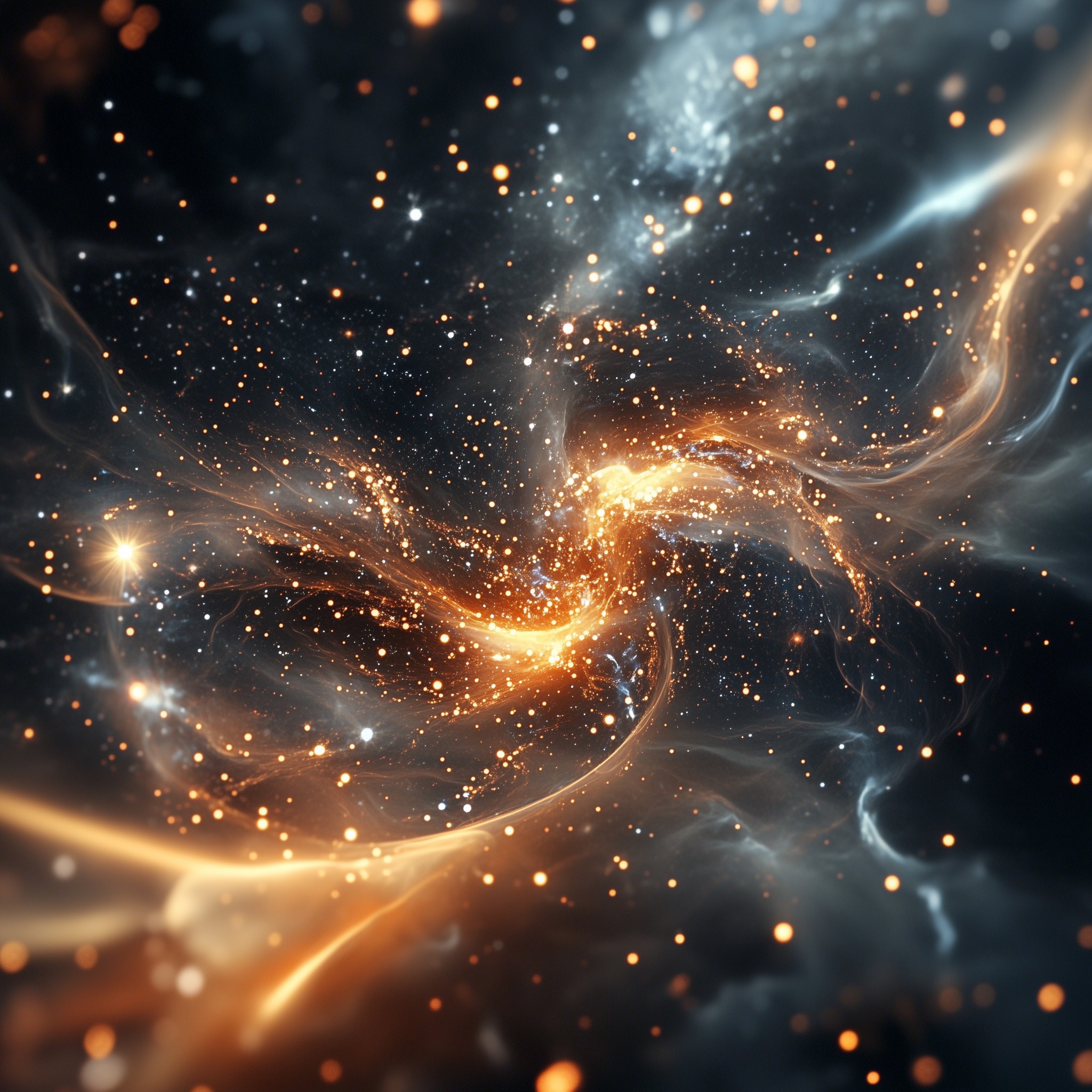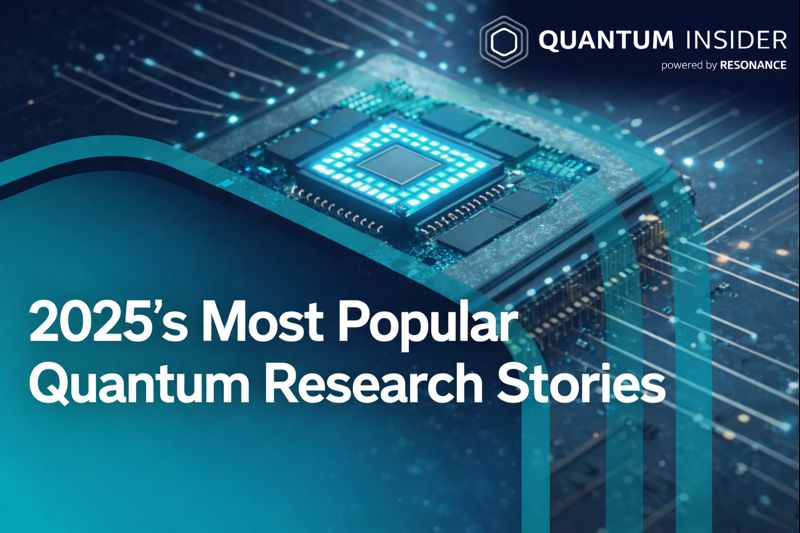Insider Brief:
- Researchers from the Autonomous University of Madrid used digital quantum computers to simulate the creation of particles in an expanding universe.
- This work focuses on how quantum fields, predicted by Quantum Field Theory in Curved Spacetime, respond to the expansion of the universe, leading to the generation of particles.
- The team built a quantum circuit to model a scalar quantum field, using IBM hardware and error mitigation techniques to overcome noise, allowing them to estimate particle creation.
- By simulating this process on IBM’s quantum systems, the researchers demonstrated that quantum computers can effectively explore complex cosmological phenomena, providing valuable insights into quantum field behavior in dynamic spacetimes.
Simulating the behavior of particles in a universe that’s constantly expanding is no trivial task. Quantum mechanics and general relativity don’t easily mesh when it comes to predicting how quantum fields behave in dynamic spacetimes. However, researchers from the Autonomous University of Madrid have found a way to further analyze this problem using digital quantum computers. In a recently published preprint on arXiv, they demonstrate how quantum computers can simulate the creation of particles in a curved, expanding universe—pushing the limits of both quantum computation and cosmology. This work, carried out on IBM quantum systems, provides a new approach for exploring Quantum Field Theory in Curved Spacetime (QFTCS), a framework that seeks to explain how quantum fields interact with gravitational forces.
A Quantum Field in a Dynamic Universe
At its core, this research focuses on how particles might form when spacetime itself is expanding. This kind of particle creation is predicted by Quantum Field Theory in Curved Spacetime, a theory that suggests that quantum fields, when placed in a curved or evolving gravitational background, behave in surprising ways. As noted in the study, this behavior is thought to play a role in everything from the early inflationary period of the universe to the radiation emitted by black holes, such as Hawking radiation.
In simpler terms, the idea is that when the fabric of spacetime changes—such as during the expansion of the universe—quantum fields respond to this change, sometimes generating new particles. This study attempts to simulate this complex process using digital quantum computers, providing a new way to explore cosmological phenomena in a controlled quantum setting.

Building the Quantum Circuit: Modeling a Universe in Expansion
The researchers built a quantum circuit to model the behavior of a scalar quantum field—essentially a type of quantum field characterized by its simplest form of oscillations. They focused on a specific scenario: a universe undergoing a rapid period of expansion (or inflation) before returning to a stationary state. The quantum field was modeled to vibrate in two modes, which represent different possible states of the field, and the researchers tracked the creation of particles as spacetime expanded.
These simulations were carried out both in a virtual quantum environment and on actual IBM quantum hardware. By taking advantage of the error mitigation techniques available in NISQ devices, the researchers were able to extract meaningful results even in the presence of noise—a key limitation of today’s quantum computers.
For this study, a circuit comprising hundreds of quantum gates (the building blocks of quantum computations) was constructed to model the evolution of the quantum field over time. Despite the significant noise that accumulates when running such large circuits on today’s quantum devices, the use of a technique called zero-noise extrapolation allowed the team to estimate the number of particles created during the simulation.
Unpacking the Math: How Expanding Spacetime Creates Particles
The foundation of this simulation, as described by the team, is a well-known cosmological model that describes the universe as expanding uniformly over time. The researchers modeled how a quantum field, initially in a vacuum state (meaning no particles are present), responds to this expansion. As spacetime stretches, the field’s oscillations mix in a process that can create particles where none previously existed. This phenomenon is captured by a transformation that relates the field’s behavior before and after the universe expands, showing how vibrations at different momenta become entangled, leading to particle creation.
To understand how many particles are generated, the researchers used a mathematical tool called the Bogoliubov transformation. This approach describes how the field’s vacuum state evolves into a state where particles can be detected. As the expansion rate increases, more particles are produced, aligning with predictions from quantum field theory. By running this simulation on IBM quantum computers, the team was able to estimate the number of particles created and observe how the quantum field behaves during the universe’s expansion, offering a new way to explore complex cosmological phenomena.
Insights from Quantum Simulations
According to the team, the most notable result of the study was the ability to estimate the number of particles created as a function of the expansion rate of the universe. By running their quantum circuit on both simulators and IBM’s 127-qubit Eagle quantum processor, the researchers demonstrated that they could successfully simulate particle creation in a cosmological context. While the results were noisy—particularly for low expansion rates—the error mitigation techniques used helped bring the outcomes closer to theoretical predictions.
This study also took into account the fidelity of the quantum state—essentially, how close the simulated state was to the ideal, theoretical state. Despite the noise and imperfections in the quantum hardware, the use of error mitigation significantly improved the fidelity, showing that NISQ-era devices may still provide useful insights into complex physical systems.
The Future of Quantum Computing and Cosmological Exploration
Simulating quantum fields in curved spacetime is important because it allows us to explore conditions that are nearly impossible to recreate in a laboratory. Think of it as a window into the very early universe or the extreme conditions near black holes—places and times where the rules of both quantum mechanics and general relativity come into play.
Moreover, this research demonstrates that even today’s noisy quantum computers can be used to explore highly theoretical concepts like particle creation in expanding spacetimes. While the team made it clear we’re still far from full-scale quantum simulations, studies like this show further testify to the role of digital quantum simulations in providing new insights into the fundamental nature of the universe.
Contributing authors on the study are Marco Maceda and Carlos Sabín.
















